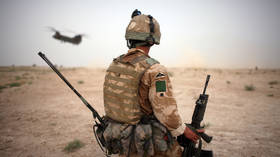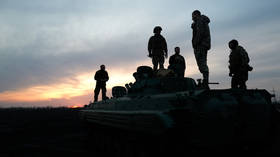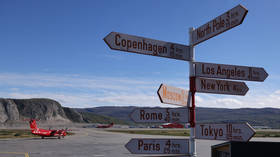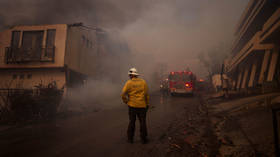New ‘Titanic’ prepares for voyage as NASA reports record low Arctic sea ice
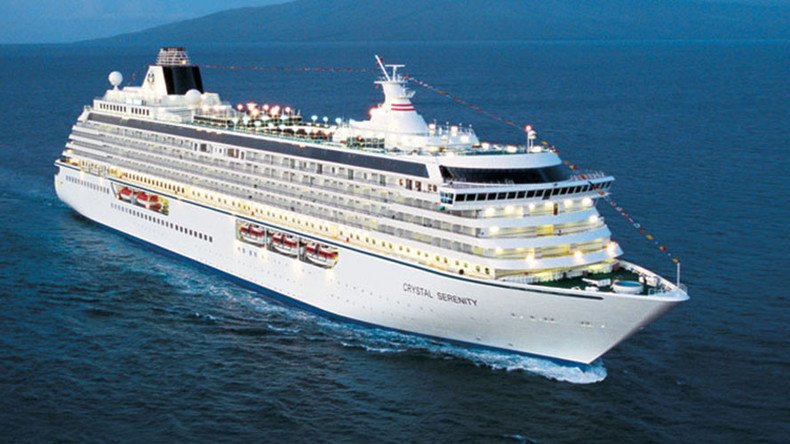
A luxury cruise liner bigger than the Titanic is set to embark on an epic voyage this summer. In anticipation, the US and Canadian coast guards will conduct exercises so they are ready should tragedy befall the trip, although NASA has reported record low Arctic sea ice.
The extravagant cruise ship, Crystal Serenity, will set sail next August on its maiden voyage, departing from Alaska then traveling through the Bering Strait and Northwest Passage before arriving in New York 32 days later.
US and Canada coast guard officials will carry out drills next month for mock mass rescue missions just in case Crystal Serenity’s 1,070 passengers and 655 crew members run into trouble. The joint exercise will take Crystal operators and rescue officials through the scenario of rescuing hundreds of passengers along the 1,000 miles from the nearest coast guard base, officials said.
“We all have to be very proactive in trying to game out what we do in an emergency situation,” Lieutenant Commander Jason Boyle, the coast guard’s prevention office for the Alaska region told The Guardian.
Shrinking Arctic sea ice allows cruise ship Crystal Serenity to make plans to cross NW passage next summer https://t.co/1bPyc0odTS
— Helen Scales (@helenscales) March 29, 2016
As if any rescue on a journey requiring accompanying icebreaking vessels and helicopters wasn’t challenging enough, there is also the lack of roads and patchy cell phone reception. Then there are the tiny towns with few facilities, hospital beds and medical supplies.
Local communities, whose livelihood comes from the ice, are apprehensive.
“If something were to go wrong it would be very, very bad,” Richard Beneville, mayor of the coastal town of Nome, which the Crystal is due to visit, told The Guardian. “Most cruise ships that get here have passenger manifests of 100, maybe 150. This is a very different ship.”
Nome has just 18 hospital beds.
Journeys through the Northwest Passage are on a sharp rise since the loss of Arctic sea ice cover, leading to an increasing risk of oil spills, shipping accidents and pollution.
Watch the steady decline of arctic sea ice, via @nasahttps://t.co/kOo6fAwFzh
— Max Galka (@galka_max) March 16, 2016
The sharp rise in traffic saw a record 540 crossings between the US and Russia last year, more than double the number in 2008. Vessels included Korean cargo ships, Russian tankers, supply barges and smaller cruise ships and adventure seekers. There have also been a number of emergency rescues.
Two British adventurers who set out to ski across the Bering Strait had to be flown to safety when they got trapped on thin ice on March 4. The rescue operation involved two coast guard helicopters, a military transport plane and 24 personnel from bases 700 miles away, the US coast guard told The Guardian.
In 2014, a scientific research ship had to rescue adventurers in the Chukchi Sea, and in 2010, a smaller cruise ship went aground in the Canadian Arctic, forcing the evacuation of 300 passengers.
Arctic sea ice appears to have reached a record low wintertime maximum for 2nd year in a row https://t.co/L2Ki4T2FK9pic.twitter.com/WUsnLikuh6
— NASA (@NASA) March 28, 2016
NASA’s latest report on the record low sea ice will do little to quell the enthusiasm for Arctic travel.
On Friday, the space agency reported that 2016 hit another record low for Arctic sea ice. Using its monitors from space, the “winter sea ice maximum” occurred on March 22, reaching an extent of 5.61 million square miles. That is 7,700 square miles below the previous lowest maximum, set in 2015. NASA said year-to-year variations are expected, but it is the long term that should be watched.
“We have almost 40 years worth of data now,” Dr. Walt Meier, a NASA scientist, said in a released statement, continuing, “and we’re seeing a significant downward trend in the winter ice cover. We’ve lost close to the size of the state of Alaska in terms of the ice area cover in winter.”
BREAKING: US gov’t won’t extend Arctic oil drilling leases, cancelling new sales - report http://t.co/aWZIQVqjDYpic.twitter.com/1DuwfmsqZ9
— RT America (@RT_America) October 16, 2015
Every year, the cap of frozen seawater floating on top of the Arctic Ocean and its neighboring seas melts during the spring and summer and grows back in the fall and winter months, reaching it full extent between February and April. The sea ice maintains Earth’s temperature. Its bright white surface reflects solar energy that the ocean would otherwise absorb, and the sea ice keeps the Northern Hemisphere cool.
Scientists seek over 100,000 seed samples from Arctic bank for Middle East http://t.co/yxX5KK0zvrpic.twitter.com/vXRxmPfAZO
— RT America (@RT_America) September 22, 2015
The new record low follows record high temperatures in December, January and February around the globe and the Arctic, with air temperatures up 10 percent, according to the space agency.
“It is likely that we’re going to keep seeing smaller wintertime maximums in the future because in addition to the warmer atmosphere, the ocean has also warmed up. That warmer ocean will not let the ice edge expand as far south as it used to,” Dr. Meier said.
Scientists are floored by what’s happening in the Arctic right now
— George Sheldon (@Severe_WXAlerts) March 4, 2016
(New data from NASA and the National Oceanic... https://t.co/r1wKEn4vjp
Since 1979, the trend has led to a loss of 620,000 square miles of winter sea ice cover, an area more than twice the size of Texas.
The loss of Arctic sea ice also changes the atmospheric circulation patterns, according to Meier.
"What happens in the Arctic doesn't stay in the Arctic … as we warm up the Arctic, we're changing the balance between the Arctic and the lower latitudes," says Meier. "That's changing weather patterns, things like the jet stream, storm tracks. These have impacts well outside of the Arctic."


